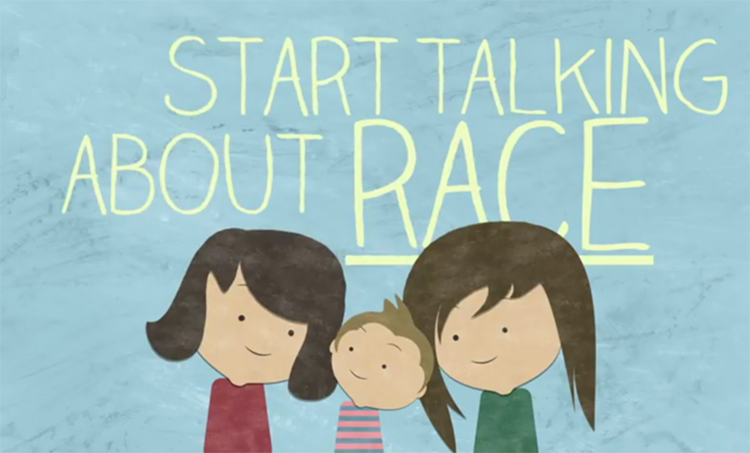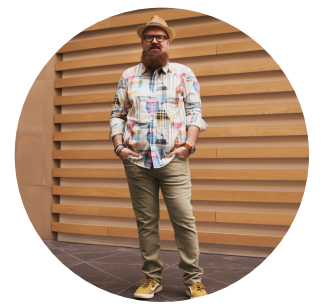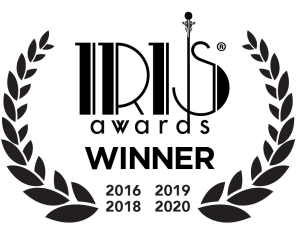
For a long time, I prided myself on being a good dad when it came to teaching my son about race. But I’ve fallen short; and in all likelihood, so have most white parents.
I think back to when Jon was little, and how we didn’t use the words “Black” or “white” when referring to race; instead using “brown” and “peach” to indicate skin color. And whenever he would tell me about a new friend or teacher, I’d do this uptight, liberal, word-twist thing where I’d ask him to describe the person using everything but their skin color. And I’ll admit to still feeling a bit of pride every time my eight-year-old makes a non-white friend.
All of these may seem good-hearted or complimentary, but all they accomplish is centering me and my white child; not really teaching either of us anything about racism. I thought that if I avoided the terms “Black” and “white,” I’d somehow avoid exposing my child to the scariness of racism. Yet all I’ve done is dilute its true impact on people of color.
And until recently, a lot of white people surmised racism was dying out along with our less-than-tolerant predecessors. But then Charlottesville proved once again that theory wrong. While the generations continue to age and die out, the racism does not. If anything, it’s grown stronger and more emboldened.
Yes, racism is horrible and terrifying. But waiting to talk to my son until I feel comfortable is another prime example of my privilege as a white person. And how much I have yet to learn.
So how can parents still struggling with their own racism teach their kids in an honest, effective, and age-appropriate way? I’ve found an extremely helpful tool in the Safety Pin Box for Kids.

What is Safety Pin Box?
Shortly after the 2016 election, people began wearing safety pins to identify themselves as a “safe place” for marginalized people. While the intent may have been altruistic, the result was merely cosmetic at best, self-serving at worst.
In response to this, activists/authors/organizers Marissa Janae Johnson and Leslie Mac created Safety Pin Box — which took the original safety pin gesture and turned it into learning tools for white people to increase their knowledge and do actual work to create change in their own lives.
Safety Pin Box for Kids grew out of this, and offers the same elements, but on a level and with language appropriate for children.
SPB Kids uses tried-and-true teaching tools: conversation starters, reflection prompts, craft projects, etc. Each section of the eight-week program explores different aspects of race and how it affects your child, their family, their community, and the world.
But fair warning that there is some challenging stuff in here. You’ll see topics like “white supremacy,” “colonialism,” and “Black Lives Matter.” Yet don’t let that scare you off or cause you to dismiss it outright. I encourage you to use this opportunity to to move beyond fear and judgement; to learn along with your child, and realize that fighting racism — in ourselves and in the world — is a lifelong process.
Giving Tuesday and Beyond: Who You Are Giving To
Whether you purchase Safety Pin Box for Kids or a Safety Pin Box subscription package, you are supporting Black women on two levels.
While SPB itself isn’t a charity, it is a business founded and run by Black women. So when you invest in learning from them, they benefit from it financially.
Secondly, SBP gives back to its community through the Black Women Being program. Every month, financial gifts are awarded to Black women working to support and empower the Black community.
HOW YOU CAN GIVE
On Giving Tuesday (or anytime), you can give in three ways:
• Buy a Safety Pin Box for Kids
• Purchase one of three different Safety Pin Box subscriptions
• Donate to the Black Women Being program
An Incredible Gift for Your Child
One of the benefits of using these tools with Jon is that it causes him to think about what racism is, what kinds of people can be hurt by it, and who specifically in his life might be harmed by it. My son was already aware that brown people were the ones meant to be kept out by Trump’s wall, and that Black people were who Dr. King was marching and speaking for. But through these exercises and conversations, it’s helping him to make the connection to victims of racism in his world, the part white people have in racism, and how our family can continually work towards becoming people who can make the world a better place.
. . . . . . . . . . . . . . . . . . . . . . . . . . . . . . . . . . . . . . . . . . . . . . .
Never miss a post! Subscribe to Designer Daddy but entering your email above, or visiting and liking Designer Daddy on Facebook!





